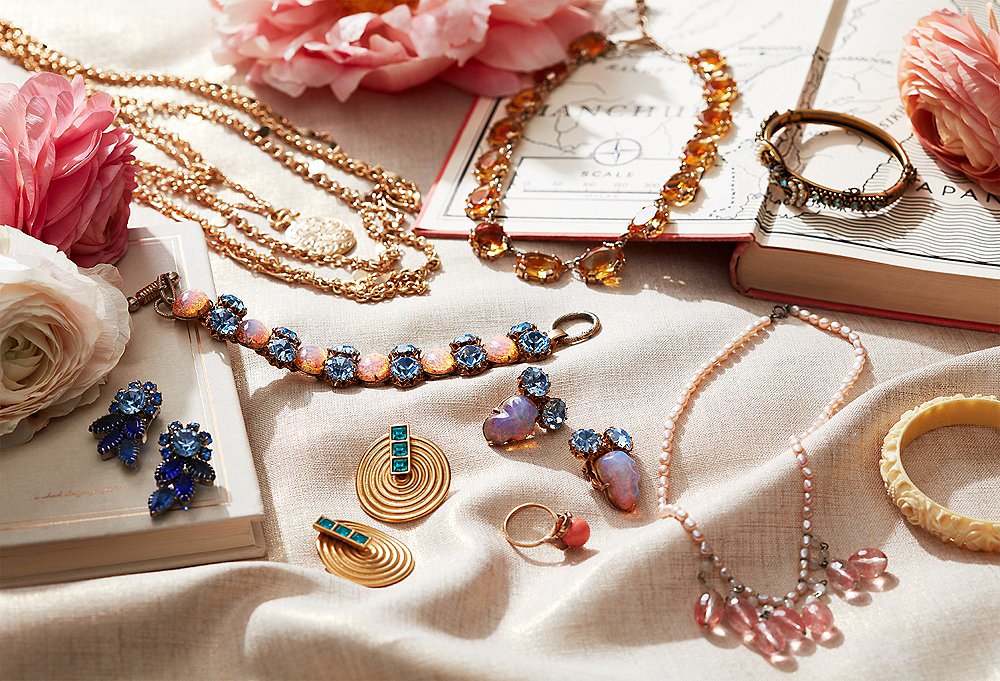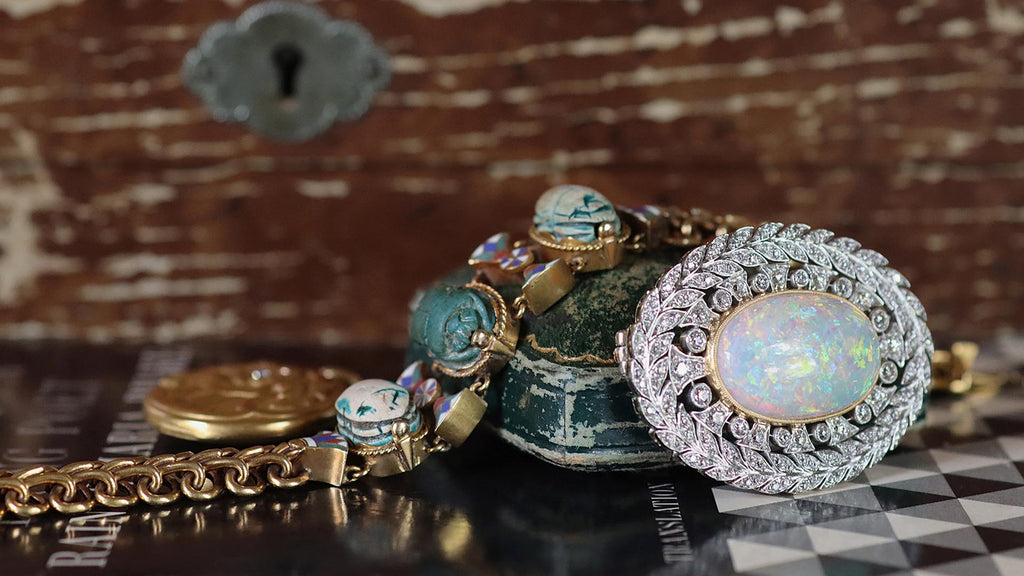Get your hands on high-quality antique rings austin that add charm.
Get your hands on high-quality antique rings austin that add charm.
Blog Article
Antique Jewelry: An Extensive Introduction of Its Various Kinds and Designs
Vintage jewelry stands for a substantial crossway of art, background, and culture, revealing much about the eras that created it. Each piece, whether a delicate brooch from the Edwardian period or an ornate ring from the Georgian age, offers insights into the craftsmanship and societal worths of its time. An exploration of the different styles and materials utilized in these productions not only highlights their visual charm but additionally underscores their historical context. Recognizing these elements is essential, as they lead the way for a much deeper appreciation of the stories behind these ageless treasures. What narratives might these items still hold?
Historic Value of Antique Jewelry
Antique precious jewelry acts as a substantial web link to the past, personifying the cultural, social, and creative values of the eras in which it was developed. Each item tells a distinct tale, mirroring the craftsmanship, products, and visual choices of its time. The historic significance of antique jewelry transcends plain ornamentation, working as a barometer for societal patterns, technical developments, and financial problems.
Throughout background, precious jewelry has actually played an essential duty in numerous cultures, often signifying condition, riches, and identity. During the Victorian age, grieving precious jewelry became prevalent, mirroring the social customizeds surrounding sorrow. Similarly, the Art Nouveau activity presented organic themes, emphasizing a departure from typical forms and showcasing the impact of nature on layout.
Furthermore, antique fashion jewelry often integrates techniques that display the creativity and skill of past craftsmens, such as hand inscription and stone setting, which are typically lost in modern mass production. Collection agencies and chroniclers alike value these pieces not just for their elegance but also for the understandings they offer right into the lives and worths of those who wore them. Eventually, antique precious jewelry is a critical part of our social heritage, linking us to the past and enhancing our understanding of history.
Key Designs and Ages
Throughout history, various vital designs and ages have actually specified the development of fashion jewelry design, each defined by distinctive creative fads and social influences. The Victorian age, spanning from 1837 to 1901, is notable for its charming concepts and complex workmanship, which frequently integrated meaning and nature-inspired layouts. Following this, the Art Nouveau activity emerged in the late 19th century, stressing natural forms and flowing lines, commonly featuring elegant flower and faunal aspects.

Each of these periods showcases not just the prevailing fashion but additionally the technical improvements and societal standards of their time. Understanding these key designs and ages Full Report gives beneficial context for appreciating the artistry and importance of antique precious jewelry, allowing enthusiasts and enthusiasts to get in touch with the abundant tapestry of background they represent.
Products Made Use Of in Antique Jewelry
Discovering the materials made use of in antique precious jewelry exposes a remarkable interplay of all-natural sources and cutting-edge craftsmanship. At the core of antique jewelry are rare-earth elements, including gold, silver, and platinum, which have been used for their resilience, malleability, and appeal (antique jewelry). Gold was commonly alloyed with various other steels to enhance its toughness while achieving certain colors, such as rose or environment-friendly gold
Gemstones additionally play a crucial duty in antique precious jewelry, showcasing a variety of shades and kinds. Traditional gemstones such as diamonds, rubies, sapphires, and emerald greens were generally used, but craftsmens also embraced semi-precious stones like purple, garnet, and turquoise. The sourcing of these stones typically mirrored the trade courses and social impacts of different periods.
In addition, products such as pearls, coral, and enamel were frequently integrated into layouts, using structure and contrast. antique jewelry. Making use of organic products like cream color and tortoiseshell was also widespread, especially in the Victorian age, representing luxury and exclusivity. Collectively, these products not just boost the aesthetic charm of antique precious jewelry but additionally act as an enduring testimony to the creativity and cultural significance of the periods in which they were crafted
Craftsmanship Techniques
The detailed beauty of antique jewelry is not exclusively credited to the products made use of yet additionally to the workmanship methods used by competent craftsmens. These strategies, commonly passed down with generations, reflect both the social influences and technical advancements of their corresponding periods.
One prominent strategy is hand inscription, where detailed layouts are carefully carved into the metal surface. This labor-intensive procedure permits special patterns, typically featuring floral concepts or geometric forms, improving the item's visual appeal. One more noteworthy approach is cloisonné, which involves using slim metal cables to produce areas loaded with enamel, leading to vibrant, vibrant layouts.
In addition, filigree-- a strategy entailing the delicate twisting of great steel threads-- adds a lace-like quality to precious jewelry, showcasing the artisan's mastery. The usage of granulation, where you can find out more little metal grains are soldered onto the surface, further exemplifies the degree of detail possible in antique items.
These craftsmanship techniques not only boost the charm of antique fashion jewelry but additionally work as a testament to the ability and creative thinking of the artisans, making each item a distinct work of art that tells a tale of its time.
Taking Care Of Antique Pieces
Looking after antique precious jewelry requires a delicate approach to protect its charm and stability. These items are often crafted from materials that are much more prone to damages than contemporary options. Normal upkeep is essential; this includes gentle cleaning making use of a soft, lint-free towel to eliminate dirt and oils. Avoid using extreme chemicals or abrasive products, as these can erode delicate surfaces or damages complex designs.
When keeping antique fashion jewelry, pick a great, completely dry setting, ideally in a fabric-lined box that stops scraping. Individual areas are recommended to stay clear of entanglement and rubbing between pieces. Additionally, think about utilizing anti-tarnish strips or bags to safeguard against oxidation, specifically for silver items.
It is suggested to have antique fashion jewelry expertly inspected and serviced occasionally, especially if it reveals signs of wear or damage. By complying with these standards, collectors and fanatics can make sure that their antique treasures stay in exceptional condition for generations to come.

Verdict
Antique fashion jewelry represents a profound link to historic craftsmanship and creative expression. Each item encapsulates the distinct designs and societal values of its era, disclosing the development of layout over time. Understanding the products and methods used improves recognition for these prizes, while proper care ensures their conservation for more helpful hints future generations. Inevitably, antique precious jewelry serves not only as adornment but likewise as a tangible web link to the rich cultural narratives woven throughout history (antique jewelry austin).
Report this page